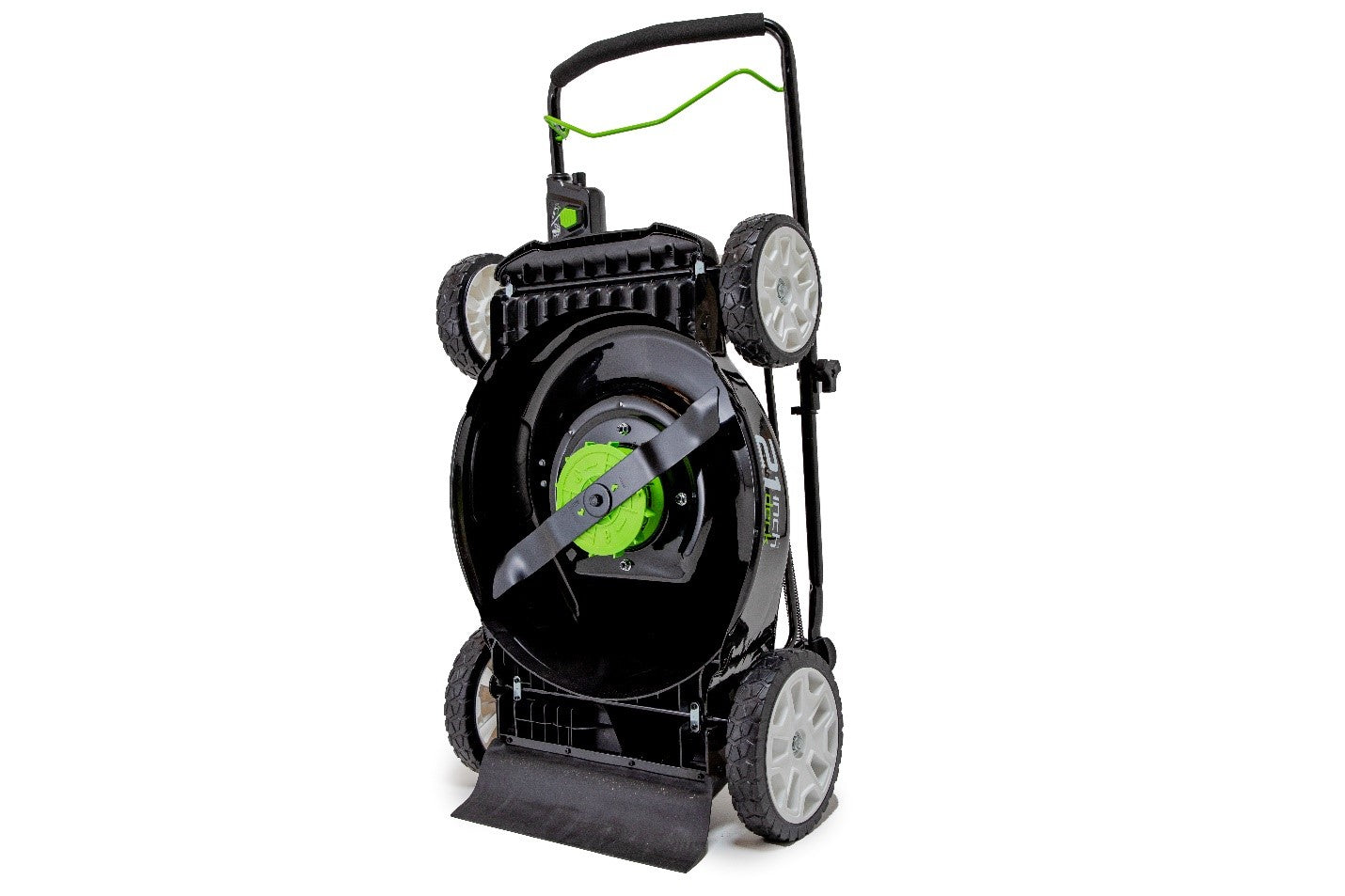
Is your lawn lacking that crisp, clean-cut look after mowing? Don't blame your technique—chances are, it's your dull lawn mower blade that's holding you back! Sharpening your lawn mower blade is a game-changer in lawn care, and here at Greenworks, we're dedicated to guiding you through the process. Whether you're a novice or a seasoned lawn care aficionado, these simple steps will elevate your mowing experience and turn your lawn into the envy of the neighborhood.

Why is Sharpening a Lawn Mower Blade Important for Your Lawn?
Maintaining a sharp lawn mower blade is crucial for achieving a lush, healthy lawn! Dull blades tear the grass instead of cleanly cutting it, resulting in a ragged and uneven appearance. This stress on your lawn leaves it susceptible to disease and discoloration, hindering its growth and vibrancy.
Sharper blades not only provide a cleaner cut but also reduce mowing time and minimize strain on your mower. They enhance efficiency by increasing cutting speeds and reducing wear and tear on your equipment. A sharp blade effortlessly slices through grass, promoting healthier growth and maintaining your lawn's pristine appearance.
When Does Your Lawn Mower Blade Need Sharpening?
Perform a post-mowing inspection of your lawn. If the grass appears frayed or torn, it's a clear indication that your blade is dull. Additionally, check the blade for signs of wear, such as nicks, dents, or a rounded edge. Even minor imperfections can compromise the blade's performance and result in an uneven cut.
How Often Should You Sharpen Your Lawn Mower Blades?
As a general rule, sharpen your lawn mower blade after every 20 to 25 hours of use. However, this frequency may vary based on factors such as lawn size and grass conditions. For most homeowners, sharpening the blade once or twice per mowing season should suffice.
How to Maintain Your Lawn Mower Blade for Optimal Performance
Effective maintenance of your lawn mower blade extends beyond sharpening. After each use, thoroughly clean the blade to remove grass clippings and debris. This prevents rust buildup and preserves the blade's condition, ensuring optimal performance.

Step-by-Step Guide to Sharpening Lawn Mower Blades
Sharpening your lawn mower blade is a straightforward process that requires attention to detail for safety and effectiveness.

Tools and Materials Required:
- Safety goggles and gloves for protection.
- Wrench or socket set for blade removal.
- Metal file, angle grinder, or drill-powered blade sharpener.
- Blade balancer or nail for checking balance.
- Cleaning supplies such as a brush and rag.
Step 1: Remove and Clean the Lawn Mower Blade
Before removing the blade, mark its orientation to facilitate reinstallation. Reattaching the blade upside down is a common mistake that can affect cutting performance.
- Tilt the mower to access the blade.
- (Optional) Use a piece of wood to stabilize the blade.
- Loosen and remove the bolt or nut with a wrench, turning counterclockwise.
- Clean the blade thoroughly to remove debris.
Step 2: Choose Your Sharpening Method
Select your preferred sharpening technique, ensuring to sharpen from the top side of the cutting edge for durability.
- Sharpening with a File: Hold the file at the same angle as the blade edge and stroke consistently.
- Using an Angle Grinder: Secure the blade and grind at the appropriate angle.
- Drill-Powered Blade Sharpener: Attach the sharpener to a drill and maintain a consistent angle along the blade edge.
Step 3: Check Blade Balance
After sharpening, verify the blade's balance using a blade balancer or nail. An unbalanced blade can cause excessive vibration, potentially damaging the mower. If imbalance occurs, file off excess metal from the heavier side.
Step 4: Reinstall the Blade
Securely reattach the blade to the mower, ensuring proper tightening of the bolt. An inadequately tightened bolt can disrupt mower performance.

When to Replace vs. Sharpen a Lawn Mower Blade
Consider replacing the blade if it displays excessive wear, bending, or damage. Additionally, having a spare blade on hand allows for rotation between sharpenings, minimizing downtime.
By following these steps, you'll ensure your mower blade remains sharp, balanced, and ready for the mowing season. Remember, a well-maintained mower is the key to a vibrant, thriving lawn!
Ready to elevate your lawn care routine? Sharpen your lawn mower blade today and revel in the beauty of a perfectly manicured lawn after every mow!
